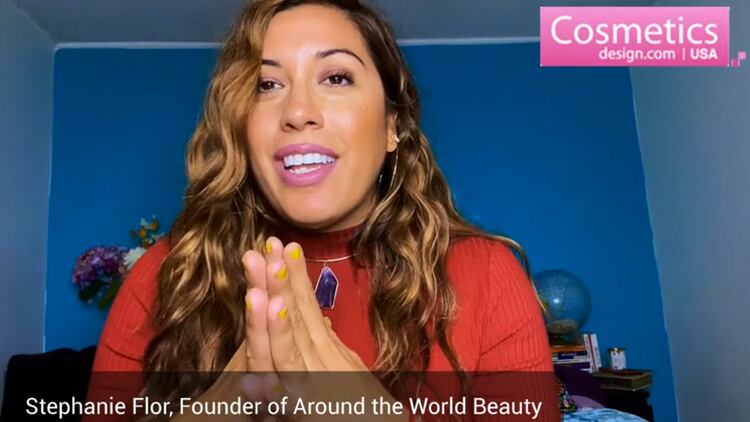This year, following the death of George Floyd and the revitalization of a global movement for racial justice and equality, the lack of diversity within the beauty industry received a significant amount of attention as did initiatives promising to rectify that lack.
And still, “a lot of brands fall very short when it comes to hiring marketing consultants for, specifically, products that they’re gearing toward women of color,” says Emmy-nominated clean makeup artist Karim Orange.
What “it boils down to,” according to Orange, is “who you have on your staff that identifies or that can suggest the right shades” and marketing language.
Her recent partnership with Gabriel Cosmetics is a notable exception, says Orange, explaining that the brand is comfortable “[reaching] out to somebody who identifies as a woman of color and [asking] for advice on ‘How do we market this? ‘What is the best way to say this?’ ‘Is this offensive?’.”
Together Orange and the brand launched the United Shades collection on November 20. And as she describes it, “the collaboration consists of two distinct color palettes—Regal and Samba—that are inspired by and created with women of color in mind. Universally, women of color are the most diverse in skin tone range and this collection is designed to celebrate and showcase beauty in all shades.”
Universal makeup shades do exist
“The surge of universal shades that you’re seeing in color cosmetics is amazing,” Orange tells the Cosmetics Design audience in her 5 Insights video at the top of this page.
“As a makeup artist,” she concedes, “I’ve always relied on universal shades in my professional kit.” And Orange goes on to describe how both application techniques and pigments themselves can determine whether or not a given makeup shade is in fact universal.
“Bronze and golds and things that maybe help the skin look like sun,” are good examples of universally flattering shades. “Everybody loves the way they look with a little bit of sun,” says Orange. And by looking to “things that you see in nature,” she says, you’ll find other universal shades, including “deep shades of brown.”
“I think all brands should have universal shades!” proclaims Orange.
Skin care is skin care is skin care
“When it comes to skin care for women of color, says Orange, laughing as she hears herself state the obvious, “I mean we have skin.”
Yet she goes on to explain her comment further saying, “Our skin care needs are definitely the same; if you have dry skin, no matter what color you are, you have dry skin, or if you have oily skin; the list goes on.”
And Orange takes care to highlight that “a lot of the stellar [skin care] ingredients come from the places that women of color are from: India, Africa, Asia,” making it all the more apparent that (in her view) much of the skin care on the market today in not expressly for any one color of consumer. Though she says lightening products are an exception.
There is something missing in makeup made for WOC
When asked what is lacking in this category, Orange doesn’t talk about textures, or shades, or formulation innovation; but rather she circles back to her earlier remarks about the importance of hiring people (either as as in-house experts or consultants) that identify with the demographic of consumers that a brand is hoping to reach.
“What’s missing in this category, color cosmetics for women of color, is something that I’ve always felt has been missing,” says Orange. “And that is really calling colors something we would call them if we were speaking to ourselves. And also the imagery that your seeing” needs to change, notes Orange thinking through the importance of having women of color on staff.
Watch the full 5 Insights video at the top of the page to hear more from Emmy-nominated makeup artist Karim Orange on the benefits and product formats women of color are seeking, on her thoughts about skin care, and how brands can do better when it comes to making makeup and marketing beauty to women of color. And learn more about her work at www.karimorange.com.



